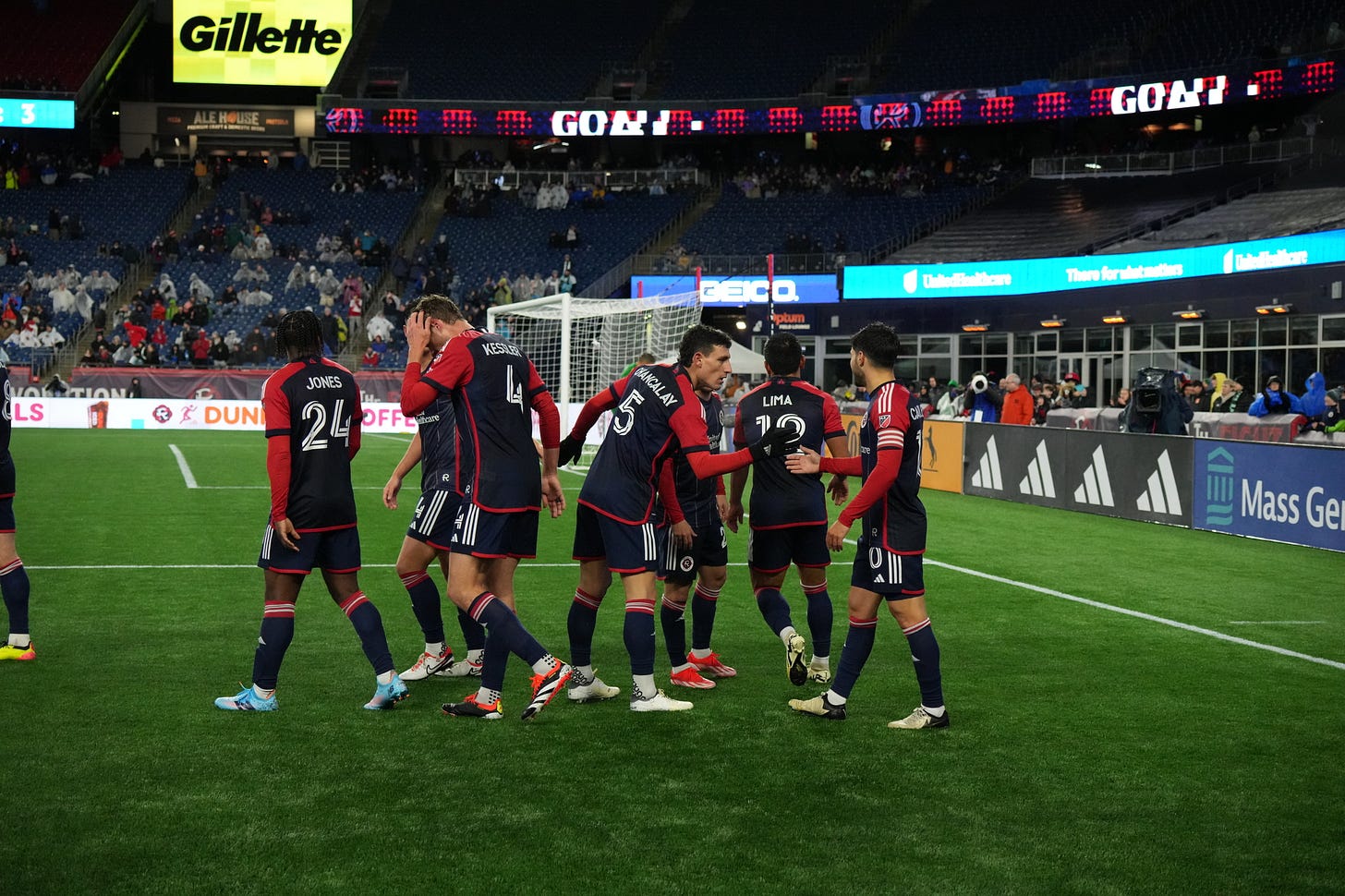The New England Revolution have their first win of the 2024 MLS season as they defeated Charlotte FC 1-0 on Saturday night.
It was a shaky start for the home side, who had a pair of bad giveaways while trying to play out of the back. Neither moment was punished by Charlotte.
The first came in the 7th minute. After a prolonged spell of possession, Henrich Ravas is stripped of the ball by Patrick Agyemang, but the striker couldn’t put it in the back of the net.
One minute later, Ian Harkes commits a turnover in his defensive end.
Harkes, who was quite good on the night, recovers well by winning the ball and launching a counterattack.
This type of verticality is important because it gets the ball in a better position. The Revs weren’t flawless in the build-up that followed Harkes’ win but the giveaways didn’t harm them because they occurred higher up the field.
The home side could also apply pressure by getting bodies around the ball.
Here’s what happened after Harkes’ win.
Verticality was an important weapon for the Revolution throughout the night.
Look at how DeJuan Jones immediately goes forward when the Revs win possession. While this moment doesn’t amount to much, we know that Jones can be a threat in transition.
Watch here as Harkes wins the ball before finding Carles Gil. Carles identifies a seam, but the goalkeeper beats Vrioni to the ball.
It’s another clip that doesn’t amount to much but I see the value in this type of play.
Now let’s look at some more threatening examples. Here’s one that starts with a throw-in.
Here’s one that results in a shot on goal.
Sometimes it’s okay to go long. This next clip shows a simple clearance by Henry Kessler that ends up being dangerous because the ball finds Nick Lima.
Lima’s cross gets blocked, but the Revs regain possession quickly because they’re high up the field.
This isn’t to say that the Revs only played vertically on Saturday because there were spells when they did a nice job building.
Here you can see that the Revs successfully swing the ball from left to right before sending in a cross that results in a shot from Tomas Chancalay.
Ultimately, the Revs’ ability to transition quickly led to them getting their first lead of the 2024 MLS season.
Nacho Gil begins the play by winning a tackle. He finds Giacomo Vrioni, who plays Carles Gil. Carles passes it to Nacho, who has his bid blocked by the goalkeeper. Carles is in the right spot to finish the play.
Playing too vertically too often is dangerous because it can lead to your opponent gaining possession. It can also leave you susceptible to counterattacks.
Charlotte grew into the game during the first part of the second half. The Revs countered this by holding onto the ball more.
In this clip, Chancalay takes a moment to stand on the ball. Obviously the Revs still needed to play with some urgency because they only had a one-goal lead, but you can see that Charlotte aren’t doing much to force the issue.
Holding onto the ball was effective because it took the air out of Charlotte as they were gaining momentum.
I like this next clip because it shows you can mix possession play with verticality. The Revs attempt to play out of their defensive third but decide to go long when they run out of options.
The long ball isn’t successful, but it does disrupt Charlotte. The Revs are now out of pressure. When the ball gets to Nacho, Charlotte has no choice but to foul him, which leads to a yellow card.
While the Revs only needed one goal to secure three points, they did have a solid shout at a penalty towards the end of the game.
The moment was a product of verticality as Esmir Bajraktervic won the ball before pushing forward. Carles appears to be nudged once he’s in the box, but the referee doesn’t blow his whistle.
To be clear, I’m not advocating for the Revs to play direct all of the time. In fact, I think they’ve produced some good moments while playing with possession.
This clip from the Cincinnati game is a good example. The passing by the Revs opens up space that the home team exploits.
Here’s another example. The Revs move the ball until Mark-Anthony Kaye finds a nice spot to move into. Kaye is then able to play vertically to create a dangerous moment.
I’m not against possession-based soccer. It has an important role in any game. Instead, this article is meant to explain how verticality is a useful tool.
The Revs need to find a nice mix of holding onto the ball and looking to play direct. This is something that Carles touched upon after the game.
“It depends on the team,” the captain said when asked about playing with more verticality. “Today it was a team that they make their line very, very high so we have the space behind them. It depends though, on the team and the planning. We know we want to get our confidence up and the way is to play like this.”





Excellent analysis, Seth.